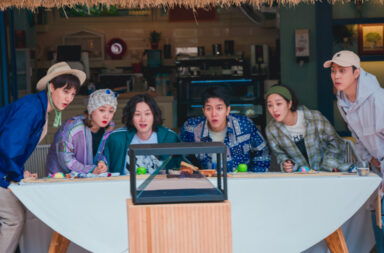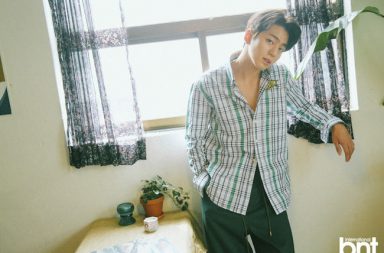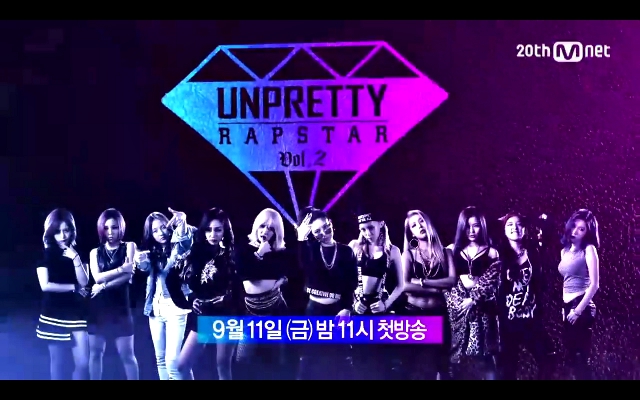
Gilme has settled herself as a kick-ass rapper since her debut in 2009. Three years on the music scene and she has already collaborated with artists like Outsider, Brown Eyed Soul’s Jeong Yeop and Eun Ji-won. Last year, Eun Ji-won, Gilme and Typhoon formed Clover, a trio which boosted her underground charm and brought attention from a broader public audience. She presented a multitude of talents: amazing rapping skills, a distinct, rich and flexible voice and a jam-packed bag of charisma. On July 12th, she released a new track called “Like a Fool,” featuring her fellow rapper, Eun Ji-won:
I think it’s safe to assume by now we like a good dose of R’n’B to go with our usual K-pop-tarts, especially when it’s served right. And Gilme knows her stuff: “Like a Fool” has rap in moderate portions, beautifully rounded vocals and a sweet, ear-melting melodic line that can’t be washed off of your brain. From the very start, her lingering “Me first” pervasively asks for attention. Once she claims her territory, she doesn’t shy away from showing what her vocal chords can do to warm us up for the chorus. The fusion between the peaceful tone announcing the break-up and the straightforward message “I will end this first” reflect in the composition’s contrast between high notes and dainty vocals, rapping and smooth singing, large pauses and passages of verbosity.
I don’t understand much what Ji-won is doing there, since I learnt his part was added after, but I’m guilty of mumbling all through the day the nonsensical, addictive “eh-ee-eh-ee-eh.” His short rap is joined by the repetitive, slightly sensual “I’m sorry” of his colleague. The rapping had me expecting something from Gilme too in that area and I wasn’t disappointed: after a bridge where she goes full- mode with her vocals and the unavoidable chorus, her rap bit kicks-in to conclude the song.
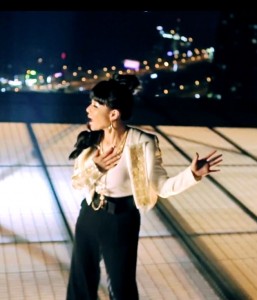
The ballad abuts various transitions from a musical style to another and alternations between vocal ranges in a harmonious composition. By the same tactics, the emotional flow descends to showcase pure suffering from an unfinished love and the urge to end it, culminating with the dramatic pause after Gilme’s bridge, ascending at different times to apprise the girl’s alleviated conscience that she won’t be the one being dumped, making her keep her head up. This results in settling throughout the song for an overall feeling of mild and peaceful regret: she repeats she is sorry, but as she feels the end is drawing near, it’s better to cut the unhealthy behavior from the start than wait for it to get worse. However, both musically and lyrically, there is no clogging: it skillfully avoids putting heavy weights on just one moment, but rather takes the listener on a journey through the already straightened-out aspects of a relationship.
The love I have for the music, artists and lyrics doesn’t apply to the video. As I pointed out, the track never feels charged. But the music video, from the very beginning, had too much going on. The sets are crowded: the car cemetery creates the illusion of a tight space with too many colors attacking the viewer’s eye. The passageway Gilme is walking features a whole different palette of colors which, next to the previous set, gets tiring for the viewer. The other settings seemed unnecessary: not much goes on in the video to require these many changes.
The same goes for clothing and make-up. The only outfit I like was the dancers’ one, simple and plain, reminiscent of Kara’s “Mister.” The combinations she made for her black-white-gold outfits seemed overboard with too many opulent accessories. She really needs to get rid of those massive earrings. The “caked” make-up was tacky: the shiny lip-gloss, the pastel colors, and the abundant eyeliner popped her eyes and lips until it looked grotesque. There were some saving graces. The high-waist trousers, the split-sleeve white shirt and the black hat added to the classy feel of the song. The hairstyles redeemed her image: the black, long ponytail, the curly hair or the huge braid favored Gilme’s figure.
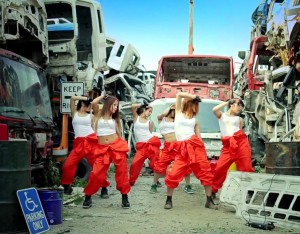
One of the main pluses of the video was the choreography. The dance routine is easy to remember and it matches the song to a ‘T.’ The body rolls with her pointing at herself while saying “Me first” contributed to the sensual undertone of the MV. The simple steps and minimal hand moves encapsulated perfectly the impression the song left: energetic, but at the same time unhurried and sluggish, it looked like a basic R’n’B dance routine. Farther in the plus area, the video featured some eye-grabbing details. The girl smashing the car window at the beginning introduced the idea of power and aggressiveness. The posters with Gilme’s name on it, followed by “What’s Your Identity?” played furthermore on the idea of self-respect the lyrics convey. The rain comes with an additional layer of drama, just after Gilme’s high note, marking also the switch to night view. The clothing’s colors and fabrics, despite the way the pieces were combined, were indeed classy and gave the whole imagery a tint of refinement.
All-in-all, the music and the lyrics were engaging and refreshing, not only for the summer, but for the music scene. I missed having a track that isn’t very loud and ostensible, with a satisfying emotional delivery to go with it. The video is half-good, half-bad, but doesn’t spoil the song itself. As for the place in Gilme’s career, it’s probably one of her most laid-back artworks. That being said, my final rating is of 4.5/5. What do you think about Gilme’s latest single?
